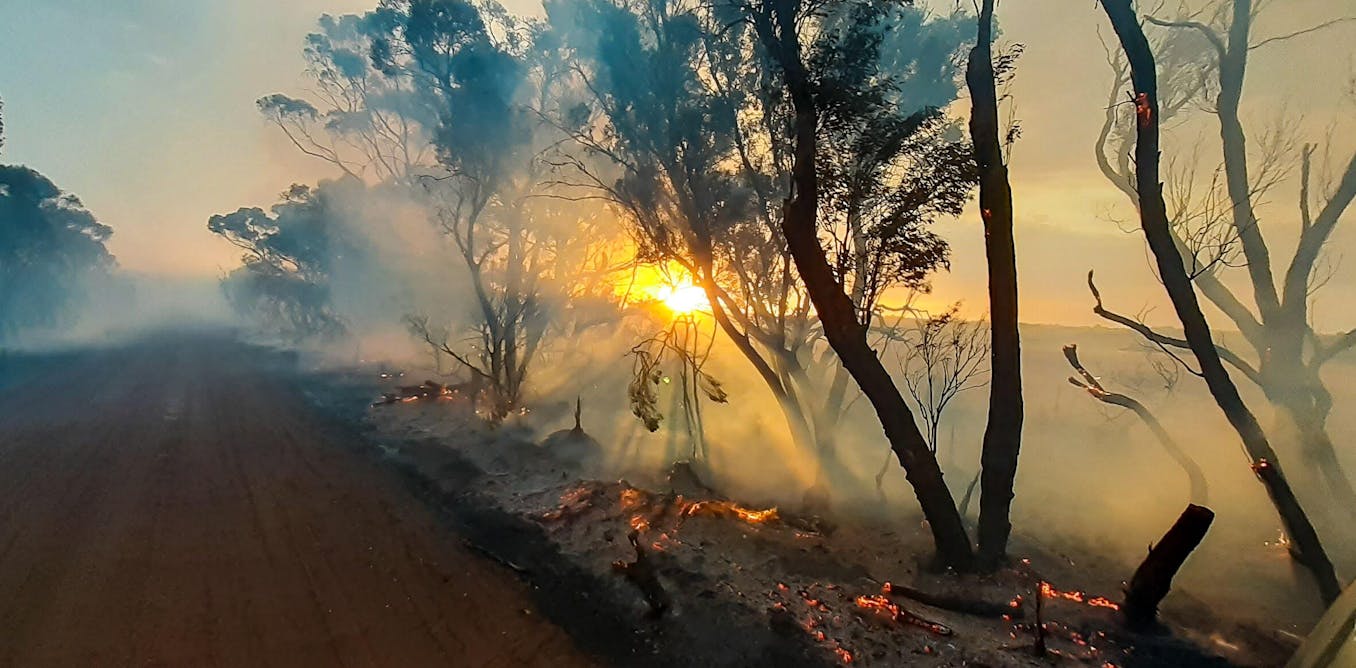Strategizing for Safety: Developing an Effective Bushfire Management Plan
Strategizing for Safety: Developing an Effective Bushfire Management Plan
Blog Article
Essential Tips for Bushfire Management to Make Sure Fire Defense

Comprehending Bushfire Risk Degrees
Understanding the varying degrees of bushfire threat is essential for efficient planning and prep work in mitigating prospective hazards to residential or commercial properties and lives. Bushfire risk levels are commonly categorized based on elements such as climate condition, fuel accessibility, topography, and historic fire behavior. By comprehending these risk communities, individuals and levels can proactively execute approaches to decrease vulnerability and improve strength in the face of prospective bushfire occasions.
The first degree of bushfire threat is reduced risk, where the probability of a bushfire taking place and triggering considerable injury is minimal. This level commonly happens during periods of low temperatures, modest humidity, and minimal wind speeds. Modest threat degrees suggest an enhanced capacity for bushfires because of intensifying climate condition or gas schedule. Risky levels symbolize a significant threat, with problems for fast fire spread and extreme fire behavior. Extreme threat levels are one of the most vital, posing brewing danger to properties and lives as a result of serious climate condition and highly combustible gas.
Understanding these bushfire risk degrees allows stakeholders to customize their readiness and reaction activities accordingly, making certain a aggressive and efficient strategy to bushfire management.
Establishing a Defensible Space
Effective bushfire administration starts with establishing a defensible room around properties to improve protection against prospective fire risks. A defensible area is a buffer area that creates an obstacle between a framework and the surrounding flammable plant life. This room serves as an important line of protection, offering firemans a safe area to operate and assisting to reduce the danger of a fire spreading to the residential property.
When developing a defensible area, it is vital to take into consideration the layout of the property and the bordering landscape. Clearing up plants, especially highly combustible plants, within a specific span of the building can assist prevent the fast spread of fires. In addition, keeping a well-irrigated zone around the building can further enhance its defensibility.
Routine upkeep of the defensible area is vital to ensure its effectiveness. This consists of cutting overhanging branches, getting rid of dead greenery, and keeping the area find cost-free of debris. By spending time and initiative right into establishing and preserving a defensible space, homeowner can significantly enhance their possibilities of securing their homes and assets during a bushfire.
Implementing Fire-Resistant Landscape Design
When making landscapes to minimize the risk of bushfires, incorporating fire-resistant aspects is necessary for enhancing home security and decreasing fire hazards. Select plants with high dampness material, reduced oil material, and minimal dead plant life to minimize the risk of fire spread.

Developing an Emergency Evacuation Strategy
Developing a thorough emergency situation evacuation strategy is important for guaranteeing the safety and well-being of people throughout potential bushfire events (BAL Report). An effective evacuation strategy need to detail clear procedures to adhere to in the event of a bushfire risk, consisting of assigned discharge courses, setting up factors, and interaction protocols
To start developing an emergency discharge strategy, it is vital to assess the details threats and susceptabilities of your place. Identify multiple discharge routes that bring about risk-free locations away from the fire, thinking about factors such as surface, roadway access, and discover this prospective dangers. Establish interaction channels to sharp residents of an approaching emptying, utilizing approaches such as alarms, text informs, or door-to-door alerts.
Frequently evaluation and exercise the discharge strategy with all homeowners or area members to ensure everyone understands their responsibilities and functions. Conduct drills to examine the effectiveness of the plan and make any required adjustments. By having a well-prepared discharge plan in place, you can improve the possibilities of a orderly and secure discharge throughout a bushfire emergency situation.
Keeping Fire Safety And Security Equipment
After establishing a detailed emergency situation evacuation strategy for bushfire incidents, it is necessary to focus on the routine maintenance of fire safety tools to make sure ideal functionality and readiness. Routine maintenance of fire security equipment such as fire extinguishers, smoke alarm, emergency alarm, and lawn sprinkler is essential in guarding lives and residential property throughout a bushfire. When needed., conducting routine examinations, screening, and servicing of these tools by qualified specialists is crucial to ensure they are in functioning order.
Fire extinguishers should be checked regularly for pressure levels, visible damages, and proper performance. By diligently preserving fire security devices, people can boost their preparedness and reaction capacities in the occasion of a bushfire.
Final Thought
Finally, efficient bushfire administration involves recognizing threat degrees, producing defensible spaces, executing fire-resistant landscaping, developing evacuation plans, and preserving fire safety devices. By following these necessary pointers, individuals can make certain far better fire security and security for their residential or commercial properties and communities. It is necessary to prioritize proactive actions to alleviate the risks associated with bushfires and to be prepared for emergencies.
By understanding the subtleties of bushfire danger degrees, creating defensible rooms, applying fireproof landscaping, producing thorough evacuation strategies, and guaranteeing the maintenance of fire safety and security devices, communities and individuals can considerably strengthen their resilience versus the devastations of wildfires - Bushfire Risk. These ideas are not only crucial for securing against immediate fire risks however additionally for cultivating long-term fire protection techniques that can make a substantial difference in the face of escalating bushfire risks
High-risk levels signify a significant hazard, with conditions favorable to quick fire spread and severe fire behavior. Regular maintenance of fire security tools such as fire extinguishers, smoke detectors, fire page alarms, and sprinkler systems is critical in securing lives and residential property throughout a bushfire.In final thought, reliable bushfire management entails comprehending risk levels, creating defensible areas, applying fireproof landscaping, creating evacuation plans, and keeping fire safety and security devices.
Report this page